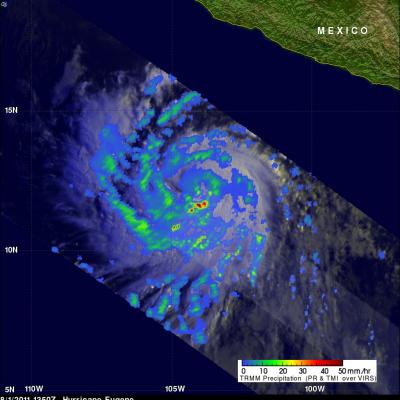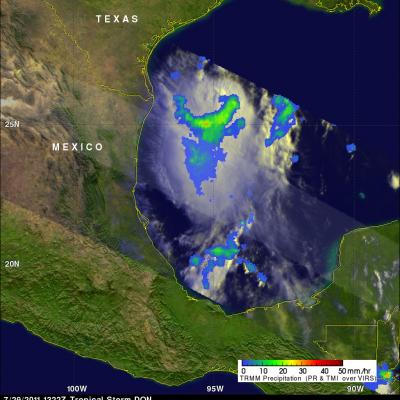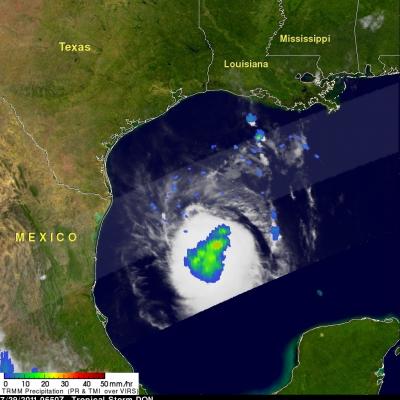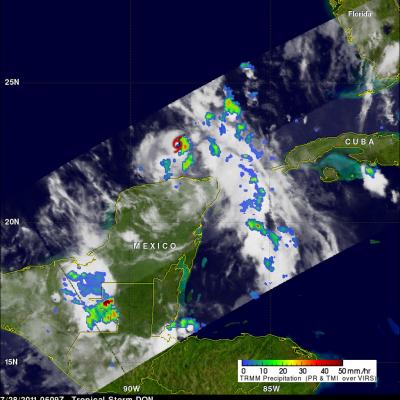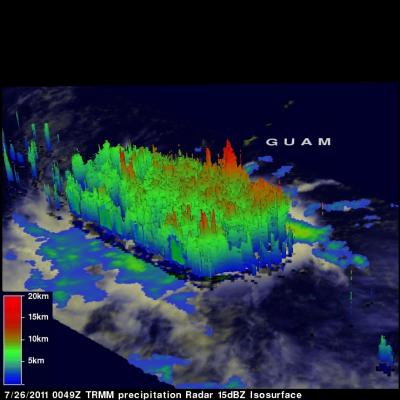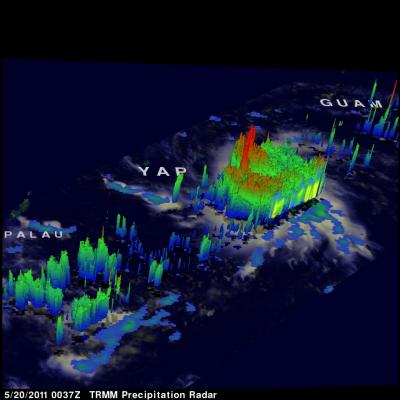TRMM Sees Rainy Emily
The TRMM satellite saw tropical storm Emily again on 4 August 2011 at 0122 UTC (9:22 PM EDT). An analysis of TRMM's Microwave Imager (TMI) and Precipitation Radar (PR) data showed that Emily was dropping heavy rainfall of over 50mm/hr (~2 inches) south of the Dominican Republic and produce some showers in Haiti. Life threatening flooding and landslides are possible as Emily moves slowly westward.




